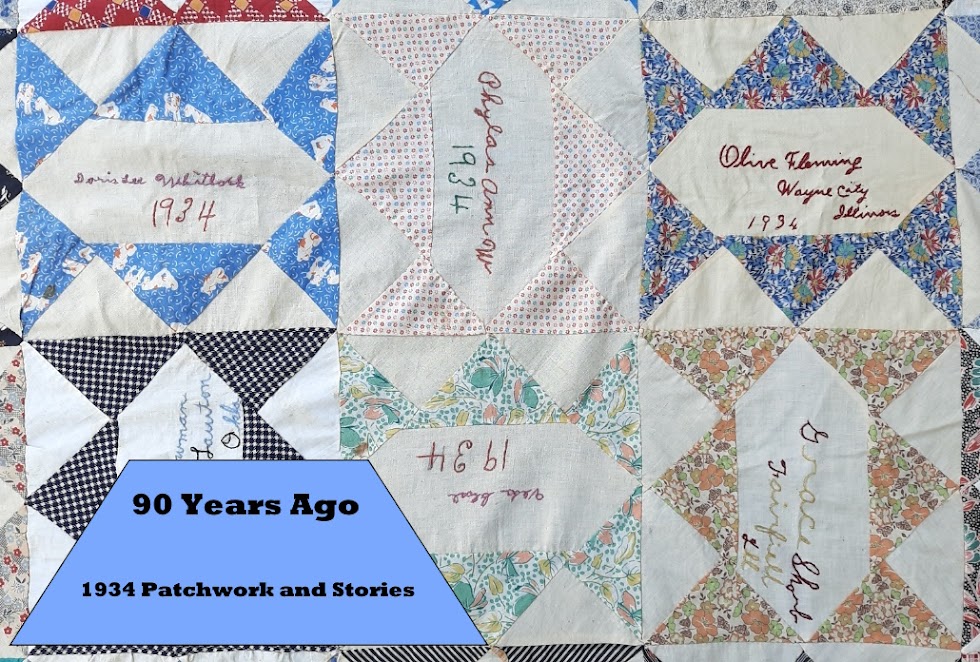I like almost all pieced blocks, but Bow Tie is not a favourite. That diagonal square for the bow tie knot? All the other pieces have to be set in around it. It takes a long time to get it right and mine never quite lay flat when I'm finished.
I went to Carrie Hall's "The Romance of the Patchwork Quilt in America" (1935) to find a Bow Tie. It wasn't listed in the index so I searched through the black and white plates to see if I could find it. I did find it in Plate XVI - Hall calls it Necktie. Her description is of the pattern is not especially helpful.
"This shows that the Colonial women were very considerate of the men-folk of their families."
I'm not quite sure what that statement means. The photo of the block in the book is 1/2 inch square so I went online to find a better picture.
In 1938 Carrie Hall donated all her quilt blocks to the Spencer Museum of Art in Kansas, and the museum has the whole collection available for online viewing.
There are two Necktie blocks in the Hall collection. This is the first one.
Now have a look at the second one.
There are two Necktie blocks in the Hall collection. This is the first one.
Now have a look at the second one.
Turning the bowtie blocks create a range of settings. If you check the Facebook page this week I will attempt to share a different layout every day.











